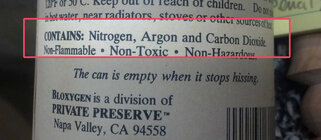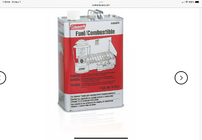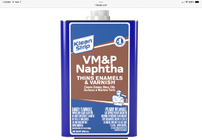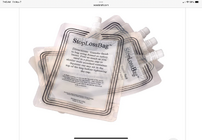I have some Danish oil I bought a couple of years ago or so. This was before I started using stop-loss bags for everything, at the time, I was distributing finishes into small bottles that could be used up in quickly, and keeping them sealed until use. That worked great for a while. Its been over two years, now, though, since I first distributed. I still have a decent amount, maybe a bit less than half a can, and these can's aren't cheap anymore. The oil reacted with the little oxygen in the bottles, and then sucked in more. Each of them has been pinched tight, and the oil is starting to get a little syrupy. It still produces a beautiful finish, but, it is becoming harder to use.
I am wondering if there is a way to rescue these remaining bottles, perhaps with some kind of thinner? I tried turpentine, which I have used as a thinner for Danish oil in the past. It does thin it out, but, it also seems to result in it actually curing on the wood faster, and I basically have no working time. I wipe it on, and if I don't wipe off "the excess" right away, then it becomes more sticky and it gets harder to wipe off the excess, but, it also had so little time to soak in, its not necessarily all excess, per-se. I'm wondering if there is a way to thin this stuff in a manner that will extend the open time a bit, allow the oil to soak into the wood more, before I have to wipe off the excess?
I live in Colorado, so, I guess, our options are limited. About the only thinners I think I can get ahold of are:
* DNA
* Isopropyl (91%)
* Turpentine
* Odorless Mineral Spirits
* Acetone
* Lacquer Thinner
Actually, I think that is all we have that might possibly work to thin oils... I'm not even sure about lacquer thinner...and don't think acetone is viable either. Our mineral spirits, STINK to high heavens, and I don't know that they actually work real well as a solvent of any kind, but, I do have a ton of it.
I am wondering if there is a way to rescue these remaining bottles, perhaps with some kind of thinner? I tried turpentine, which I have used as a thinner for Danish oil in the past. It does thin it out, but, it also seems to result in it actually curing on the wood faster, and I basically have no working time. I wipe it on, and if I don't wipe off "the excess" right away, then it becomes more sticky and it gets harder to wipe off the excess, but, it also had so little time to soak in, its not necessarily all excess, per-se. I'm wondering if there is a way to thin this stuff in a manner that will extend the open time a bit, allow the oil to soak into the wood more, before I have to wipe off the excess?
I live in Colorado, so, I guess, our options are limited. About the only thinners I think I can get ahold of are:
* DNA
* Isopropyl (91%)
* Turpentine
* Odorless Mineral Spirits
* Acetone
* Lacquer Thinner
Actually, I think that is all we have that might possibly work to thin oils... I'm not even sure about lacquer thinner...and don't think acetone is viable either. Our mineral spirits, STINK to high heavens, and I don't know that they actually work real well as a solvent of any kind, but, I do have a ton of it.






